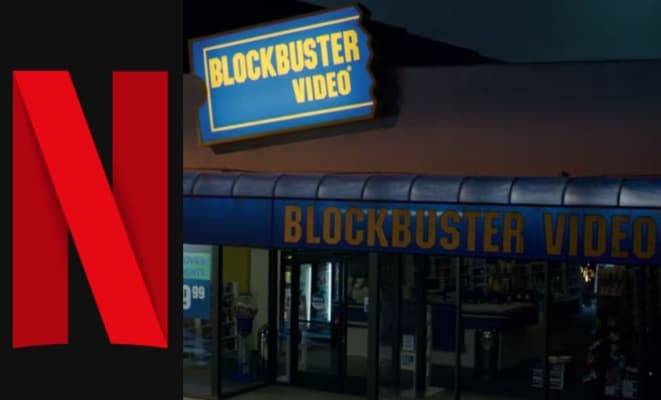The rivalry between Netflix and Blockbuster epitomizes the stark contrast between traditional business models and the forces of digital disruption. As this battle unfolded, it underscored the profound, yet gradual, impacts of technology on industries accustomed to conventional operation methods, including media and retail.
Netflix’s emergence in 1997 as a video rental-by-mail service marked the beginning of a new era in the entertainment industry. This innovation directly challenged Blockbuster, the reigning giant of the video rental market since its acquisition by Viacom in 1994 for $8.4 billion.
Netflix was established by Reed Hastings and Marc Randolph as a DVD rental service via mail, which was a novel concept at the time. By April 1998, the company launched its website with 925 titles available for rent, introducing a monthly subscription concept in 1999, which revolutionized the video rental industry.
In 2000, Netflix co-founders Reed Hastings and Marc Randolph approached Blockbuster with a proposal to sell their company for $50 million. This meeting included Blockbuster’s then-CEO John Antioco and other top executives.
John Antioco, viewing Netflix as a niche business with limited market appeal, rejected the offer. At the time, Netflix primarily attracted movie enthusiasts unconcerned with new releases, early adopters of DVD technology, and frequent online shoppers.
Randolph shared the story about making a pitch to Blockbuster, saying:
“The pitch was simple. We would join forces with Blockbuster. We would run the online business. They would run the stores. We would jointly develop a blended model,”
He added:
“There was perfect silence. Their words were ‘we’ll consider it,’ but we could tell they were fighting to suppress laughter. After that, the meeting went downhill fast.”
One former Blockbuster executive was quoted as saying:
“We had the option to buy Netflix for $50 million and we didn’t do it. They were losing money. They came around a few times.”
Blockbuster’s business model heavily relied on in-store rentals and late fees, which were major revenue streams but increasingly unpopular among customers. Despite Netflix’s growing popularity, Blockbuster continued to focus on its traditional rental model without fully embracing the potential of online DVD rentals or streaming services.
In 2004, Blockbuster attempted to compete by launching its own online DVD rental service, Blockbuster Online, but this move came several years after Netflix had established dominance in the online market.
The decision to eliminate late fees in 2005 led to a temporary increase in rental volume but resulted in a significant loss of $600 million in annual revenue, which was critical for Blockbuster’s financial health.
Carl Icahn’s acquisition of a nearly 10% stake in Blockbuster in 2005 and his subsequent influence led to strategic decisions that did not align with strengthening Blockbuster’s position in the digital marketplace. His push for leadership changes installed executives inexperienced with digital strategies, further hindering Blockbuster’s ability to adapt.
Blockbuster’s fixed cost structure, with significant overhead due to maintaining numerous physical stores, made it difficult to adjust to declining store rentals and the shift towards digital streaming.
Ultimately, Blockbuster’s inability to foresee the impact of streaming services and adapt its business model accordingly led to its bankruptcy filing in 2010 – while Netflix is now worth over $200 billion.

